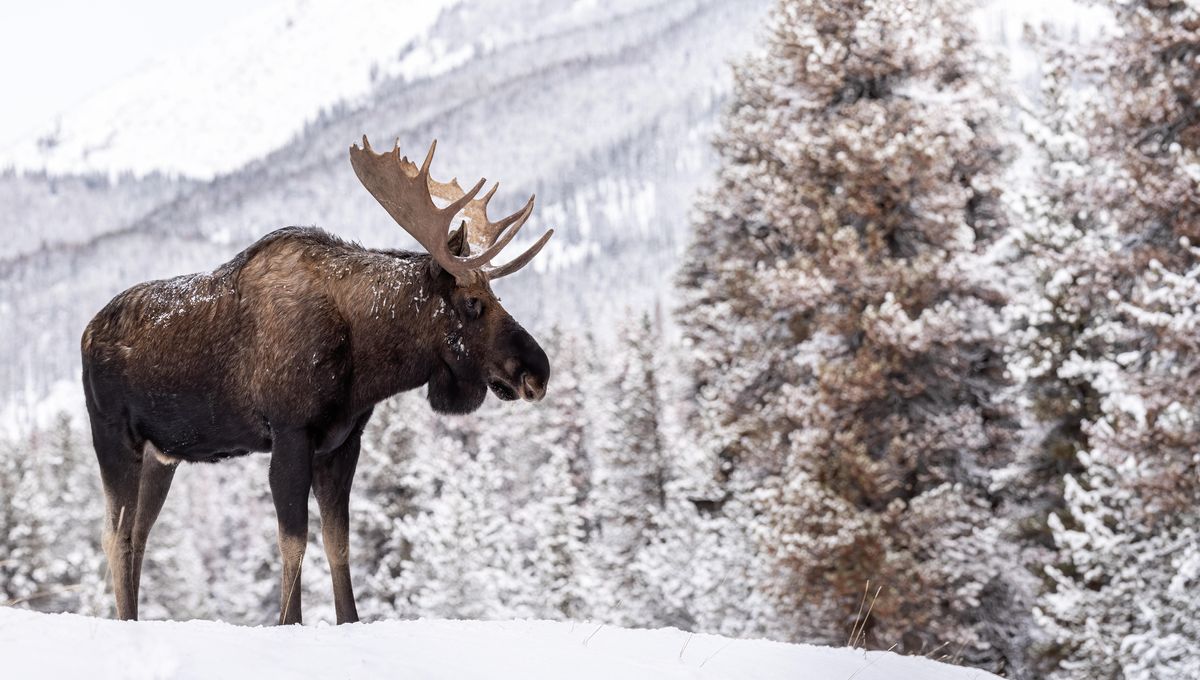
If you’re driving through any Canadian national parks this winter, there is one thing you shouldn’t do, according to Parks Canada: don’t stop to let moose lick your car.
This may sound like a strange instruction, but there is a good reason for it. As the highways through the parks continue to be gritted to prevent ice, the animals are making their way into traffic in order to lick salt from the roads.
In some instances, people are stopping to let the moose lick the salt that has clung to their vehicles’ exteriors.
“It does sound very funny… It’s OK to laugh at it, as long as people drive responsibly and do what’s best for the wildlife,” Tracy McKay, with the National Parks Agency, told the CBC.
“Unfortunately, this kind of puts [moose] at risk of being injured or killed if they get hit by a vehicle,” she said.
It is understandable that people would want to take the opportunity to get that close to such an incredible animal. Moose are massive. The average female weighs 350 kilograms (771 pounds) and the average male comes in at about 400 kilograms (881 pounds). They can grow up to 3.2 meters (10 feet) in length, and a bull’s antlers can have a span of around 1.8 meters (6 feet).
However, encouraging moose to approach cars can be dangerous for both drivers and the animals. If moose start to associate cars with a potential source of salt, then they are more likely to walk out into traffic and cause accidents, and likely get killed or seriously injured in the process.
But why are they searching for salt? Well, the answer is straightforward and not something that is unique to these animals alone. Moose, like many other herbivores, need sodium and other minerals to maintain their health. Throughout the summer months, they are able to get this from the large variety of greenery they consume, but in winter, things get trickier as food is less varied and less abundant.
This is why road salt is so appealing. It’s convenient and relatively plentiful. Even in instances where sand is used instead of salt, the animals will still lick road surfaces because there are trace amounts available to them.
January and February are also the darkest months, so drivers will have to navigate the roads in low-light conditions, which could make spotting a dark-colored moose all the more challenging.
Ultimately, the advice is simple, McKay added: “If it’s safe to keep going without running into the moose, then we would recommend people just try to slowly, carefully drive away. Just try not to let moose lick your car.”
Source Link: Why You Shouldn’t Let Moose Lick Your Car, And What To Do If One Tries